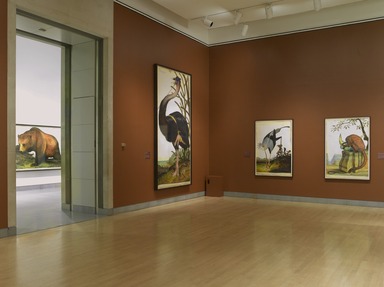

Tigers of Wrath: Watercolors by Walton Ford, November 3, 2006 through January 28, 2007 (Image: DIG_E2006_Ford_01_PS2.jpg Brooklyn Museum photograph, 2006)
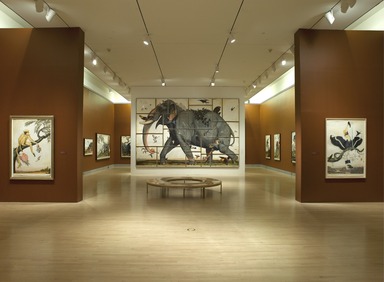
Tigers of Wrath: Watercolors by Walton Ford, November 3, 2006 through January 28, 2007 (Image: DIG_E2006_Ford_02_PS2.jpg Brooklyn Museum photograph, 2006)

Tigers of Wrath: Watercolors by Walton Ford, November 3, 2006 through January 28, 2007 (Image: DIG_E2006_Ford_03_PS2.jpg Brooklyn Museum photograph, 2006)

Tigers of Wrath: Watercolors by Walton Ford, November 3, 2006 through January 28, 2007 (Image: DIG_E2006_Ford_04_PS2.jpg Brooklyn Museum photograph, 2006)

Tigers of Wrath: Watercolors by Walton Ford, November 3, 2006 through January 28, 2007 (Image: DIG_E2006_Ford_05_PS2.jpg Brooklyn Museum photograph, 2006)

Tigers of Wrath: Watercolors by Walton Ford, November 3, 2006 through January 28, 2007 (Image: DIG_E2006_Ford_06_PS2.jpg Brooklyn Museum photograph, 2006)
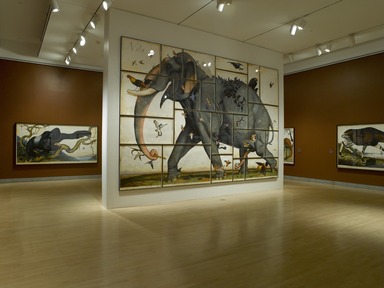
Tigers of Wrath: Watercolors by Walton Ford, November 3, 2006 through January 28, 2007 (Image: DIG_E2006_Ford_07_PS2.jpg Brooklyn Museum photograph, 2006)
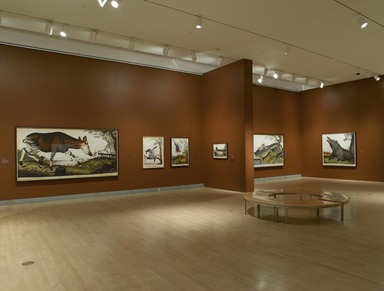
Tigers of Wrath: Watercolors by Walton Ford, November 3, 2006 through January 28, 2007 (Image: DIG_E2006_Ford_08_PS2.jpg Brooklyn Museum photograph, 2006)
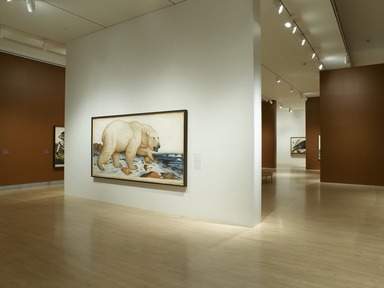
Tigers of Wrath: Watercolors by Walton Ford, November 3, 2006 through January 28, 2007 (Image: DIG_E2006_Ford_09_PS2.jpg Brooklyn Museum photograph, 2006)
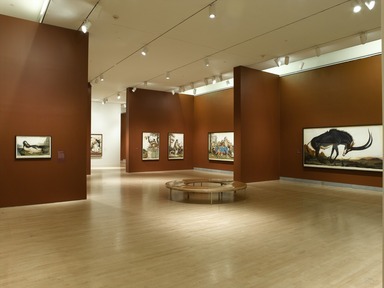
Tigers of Wrath: Watercolors by Walton Ford, November 3, 2006 through January 28, 2007 (Image: DIG_E2006_Ford_10_PS2.jpg Brooklyn Museum photograph, 2006)
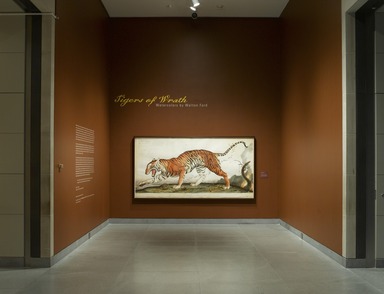
Tigers of Wrath: Watercolors by Walton Ford, November 3, 2006 through January 28, 2007 (Image: DIG_E2006_Ford_11_PS2.jpg Brooklyn Museum photograph, 2006)
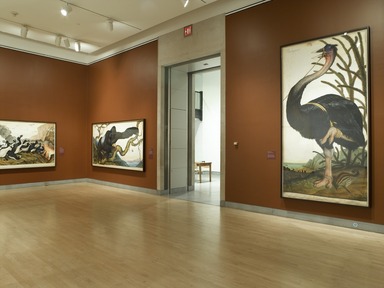
Tigers of Wrath: Watercolors by Walton Ford, November 3, 2006 through January 28, 2007 (Image: DIG_E2006_Ford_12_PS2.jpg Brooklyn Museum photograph, 2006)

Tigers of Wrath: Watercolors by Walton Ford, November 3, 2006 through January 28, 2007 (Image: DIG_E2006_Ford_13_PS2.jpg Brooklyn Museum photograph, 2006)

Tigers of Wrath: Watercolors by Walton Ford, November 3, 2006 through January 28, 2007 (Image: DIG_E2006_Ford_14_PS2.jpg Brooklyn Museum photograph, 2006)
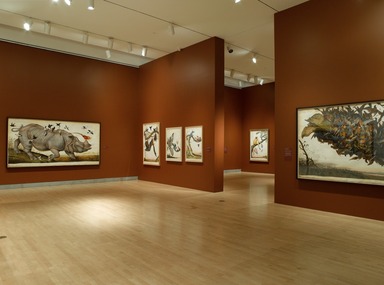
Tigers of Wrath: Watercolors by Walton Ford, November 3, 2006 through January 28, 2007 (Image: DIG_E2006_Ford_15_PS2.jpg Brooklyn Museum photograph, 2006)

Tigers of Wrath: Watercolors by Walton Ford, November 3, 2006 through January 28, 2007 (Image: DIG_E2006_Ford_16_PS2.jpg Brooklyn Museum photograph, 2006)

Tigers of Wrath: Watercolors by Walton Ford, November 3, 2006 through January 28, 2007 (Image: DIG_E2006_Ford_17_PS2.jpg Brooklyn Museum photograph, 2006)

Tigers of Wrath: Watercolors by Walton Ford, November 3, 2006 through January 28, 2007 (Image: DIG_E2006_Ford_18_PS2.jpg Brooklyn Museum photograph, 2006)
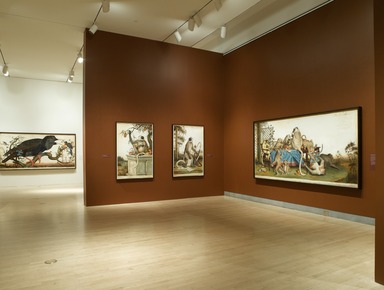
Tigers of Wrath: Watercolors by Walton Ford, November 3, 2006 through January 28, 2007 (Image: DIG_E2006_Ford_19_PS2.jpg Brooklyn Museum photograph, 2006)
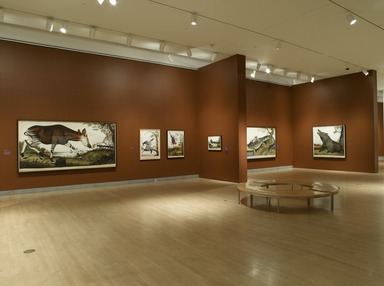
Tigers of Wrath: Watercolors by Walton Ford, November 3, 2006 through January 28, 2007 (Image: DIG_E2006_Ford_20_PS2.jpg Brooklyn Museum photograph, 2006)

Tigers of Wrath: Watercolors by Walton Ford, November 3, 2006 through January 28, 2007 (Image: DIG_E2006_Ford_21_PS2.jpg Brooklyn Museum photograph, 2006)
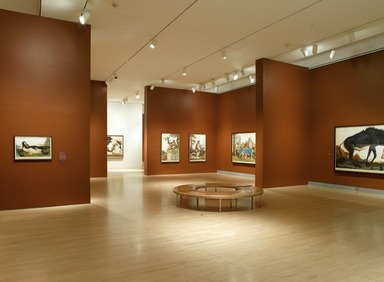
Tigers of Wrath: Watercolors by Walton Ford, November 3, 2006 through January 28, 2007 (Image: DIG_E2006_Ford_22_PS2.jpg Brooklyn Museum photograph, 2006)
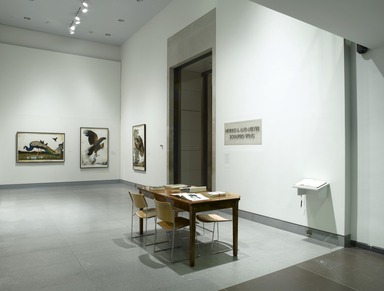
Tigers of Wrath: Watercolors by Walton Ford, November 3, 2006 through January 28, 2007 (Image: DIG_E2006_Ford_23_PS2.jpg Brooklyn Museum photograph, 2006)

Tigers of Wrath: Watercolors by Walton Ford, November 3, 2006 through January 28, 2007 (Image: DIG_E2006_Ford_24_PS2.jpg Brooklyn Museum photograph, 2006)

Tigers of Wrath: Watercolors by Walton Ford, November 3, 2006 through January 28, 2007 (Image: DIG_E2006_Ford_25_PS2.jpg Brooklyn Museum photograph, 2006)
Tigers of Wrath: Watercolors by Walton Ford
-
Tigers of Wrath
Walton Ford’s art is a study in contradictions. Although he uses materials most often associated with small, intimate works—watercolor, gouache, graphite, and ink—his paintings are often enormous. His attention to intricate detail and his bewitching technical mastery result in stunning images, but upon close examination, these attractive scenes frequently reveal a repulsive world of ugly brutality. The themes seem to be drawn from nature, but they are also about history, politics, and culture. “The main thing I’m always looking for in my work is a sort of attraction/repulsion,” Ford explains, “where the stuff is beautiful to begin with until you notice some horrible violence is about to happen in the middle of the happening. Often that can be the moment when an animal is defined by and enters human culture.”
Ford invites us to view his subject matter through an art historical lens. The most striking feature of his work is its resemblance to John James Audubon’s well-known series Birds of America, first published in 1840. Ford mimics not only Audubon’s style but also the handwritten notes he often incorporated in his paintings. The satirical edge Ford adds recalls artists such as Pieter Brueghel the Elder (Dutch, circa 1525–1569), J. J. Granville (French, 1803–1847), and Robert Crumb (American, born 1943).
The artist’s watercolors are layered with influences and ideas. His work celebrates a kind of wonder resulting from thorough research, as indicated by his book-strewn studio, where one might find an instruction book for nineteenth-century trappers, a Swiss zookeeper’s manual, or a translation of a Sanskrit elephant-training manuscript. If we knew all of the stories behind Ford’s grand images, we could read the pictures like novels. Yet Ford would have us liken his paintings to dreams in which we have a general idea of what occurred but the interpretation escapes us. In some instances in the exhibition, sources that inspired the artist have been cited so that the viewer can try to unlock the underlying meaning of an image. But one need not attempt to decipher the deeper intentions of these works; we can simply admire them for their elegance. Searching for the meaning of these paintings, after all, can be similar to what Audubon experienced in trying to catch a glimpse of the now extinct passenger pigeon:
When an individual is seen gliding through the woods and close to the observer, it passes like a thought, and on trying to see it again, the eye searches in vain; the bird is gone.
Marilyn S. Kushner
Curator of Prints, Drawings, and Exhibitions
-
April 7, 2006
More than fifty of Walton Ford’s meticulously rendered, large-scale watercolors of vividly imagined birds, animals, and flora will be on view in an exhibition at the Brooklyn Museum from November 3, 2006, through January 28, 2007. Tigers of Wrath: Watercolors by Walton Ford, which will tour to venues to be announced, comprises watercolors created between 1990 and the present exploring such themes as colonialism, the naturalist tradition, and the extinction of species.
Using the animal kingdom as a mirror of the human world, Ford employs his skill as an artist and observer to communicate his views on society. In The Starling, 2002, he depicts an enormous European starling presiding over a desert-like landscape and being fed by exotic birds from around the world. In Passenger Pigeons of Falling Bough, 2002, Ford presents a massive flock of the squabbling birds perched on a bough that has broken under their weight.
Also included in the exhibition are Dirty Dick Burton’s Aide de Camp, 2002, in which a monkey represents the nineteenth-century naturalist Richard Burton, who employed primates in his house to learn their language; Jack on His Deathbed, 2005, in which the primate is a stand-in for the eighteenth-century British ambassador to Naples, Sir William Hamilton, a diplomat who owned a pet monkey; and Delirium, 2004, which makes reference to John James Audubon’s practice of killing animals in order to study them more closely. In this image the golden eagle, still attached to a trap, flies to freedom, while the tiny figure of Audubon lies flat in the snow below.
Ford drew his early inspiration from the work of nineteenth-century artist and naturalist John James Audubon—particularly his prodigious Birds of America series–as well as from visits to the American Museum of Natural History. Other influences include J.J. Grandville and Sir John Tenniel, the French artists whose caricatures of part-human, part-animal subjects satirized nineteenth-century French and British society; Edward Lear, an artist and writer known for his nonsensical poetry and limericks; George Catlin, a self-taught painter of Native Americans; and Francisco Goya, the Spanish artist working at the turn of the nineteenth-century.
Born in Larchmont, New York, in 1960, Walton Ford is a 1982 graduate of the Rhode Island School of Design.
He is the recipient of several national awards and honors including fellowships from the John Simon Guggenheim Memorial Foundation and the National Endowment for the Arts.
Tigers of Wrath: Watercolors by Walton Ford is organized by Marilyn Kushner, Chair and Curator, Department of Prints, Drawings, and Photographs at the Brooklyn Museum.
The exhibition is made possible in part by Bloomberg, with additional support from the Prints, Drawings, and Photographs Council of the Brooklyn Museum.
View Original

